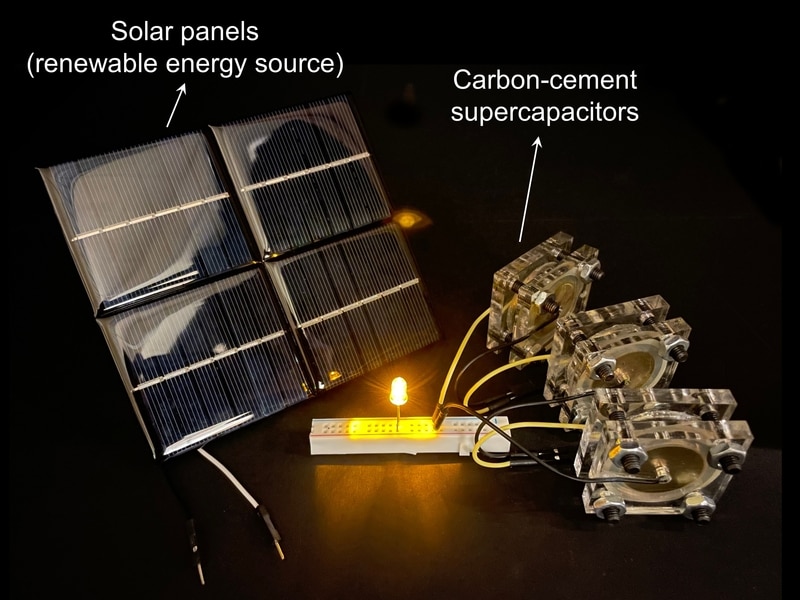
MIT's cement-carbon supercapacitor can integrate into the foundation of a home, storing energy generated by renewables. (Image Credit: MIT)
To phase out fossil fuels for a greener world, scientists are exploring better energy storage solutions for renewables, including solar panels. Using batteries instead for that purpose isn't usually ideal due to their charging times, and they rely on lithium. With that in mind, MIT and Harvard's Wave Institute for Biologically Inspired Engineering scientists created a supercapacitor based on water, cement, and carbon black.
The team decided to develop the supercapacitor with those materials to curb the concrete carbon footprint and address the battery technology limitations. "The material is fascinating," MIT professor Admir Masic says, "because you have the most-used manmade material in the world, cement, that is combined with carbon black, that is a well-known historical material — the Dead Sea Scrolls were written with it. You have these at least two-millennia-old materials that when you combine them in a specific manner, you come up with a conductive nanocomposite, and that's when things get really interesting."
They created the supercapacitor by mixing cement, which serves as the electrode, water, and a small amount of carbon black into a paste. During the mixture's curing process, the water is absorbed, forming a network of branched tunnels filled with the carbon black material. This resulted in a cement paste featuring a large area surface of conductive, wirelike tunnels without extending the electrode's volume.
Carbon black's reaction in the electrode is significant since it may lead to a simpler supercapacitor scaling process. The scientists soaked both electrodes in an electrolyte solution, allowing them to distribute charged particles to the system. During demonstrations, they created button-sized capacitors storing 1V of charge and concluded they retained their storage capacity with minimal loss after 10,000 charge/discharge cycles. Additionally, three 1V supercapacitors powered a 3V LED.
"Another potential application for carbon-cement supercapacitors is for building concrete roadways that could store energy produced by solar panels alongside the road and then deliver that energy to electric vehicles traveling along the road using the same kind of technology used for wirelessly rechargeable phones. A related type of car-recharging system is already being developed by companies in Germany and the Netherlands, but using standard batteries for storage," MIT wrote.
The team believes their supercapacitor could be practical for concrete roads to wireless charge electric cars. They also expect to place their carbon-cement supercapacitors into home foundations. According to their estimates, a 45 cubic meter sample of this supercapacitor could store 10 kWh---the average daily use for a household. Now, the team is working on fabricating a 1V supercapacitor with the same materials.
Have a story tip? Message me at: http://twitter.com/Cabe_Atwell
